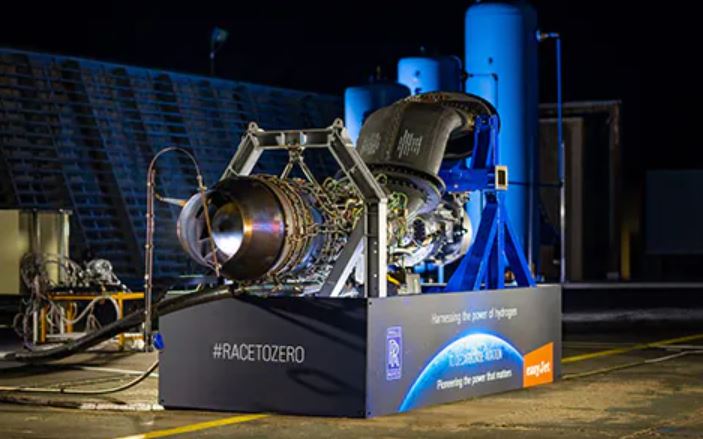United Kingdom – With the world’s first run of a modern aircraft engine on hydrogen, Rolls-Royce and easyJet have set a new aviation milestone.
The ground test was carried out on an early concept demonstrator powered by wind and tidal energy. It is a significant step toward establishing that hydrogen might be a zero-carbon aviation fuel of the future, and it is a critical proof point in both Rolls-Royce and easyJet’s decarbonization programs.
Both businesses have set out to demonstrate that hydrogen can give power to civil aircraft engines in a safe and efficient manner, and they are already preparing a second set of experiments, with the longer-term goal of conducting flight tests.
Testing process
The test was conducted at the MoD’s Boscombe Down outdoor test facility in the United Kingdom, with a converted Rolls-Royce AE 2100-A regional aircraft engine. EMEC (European Marine Energy Centre) supplied green hydrogen for the experiments, which was produced using renewable energy at their hydrogen production and tidal test facility on Eday in the Orkney Islands, UK.
Following the study of this early concept ground test, the alliance intends to conduct a series of additional rig tests, culminating in a full-scale ground test of a Rolls-Royce Pearl 15 jet engine.
The collaboration is motivated by the global, UN-backed Race to Zero program, to which both companies have committed to achieving net zero carbon emissions by 2050.





